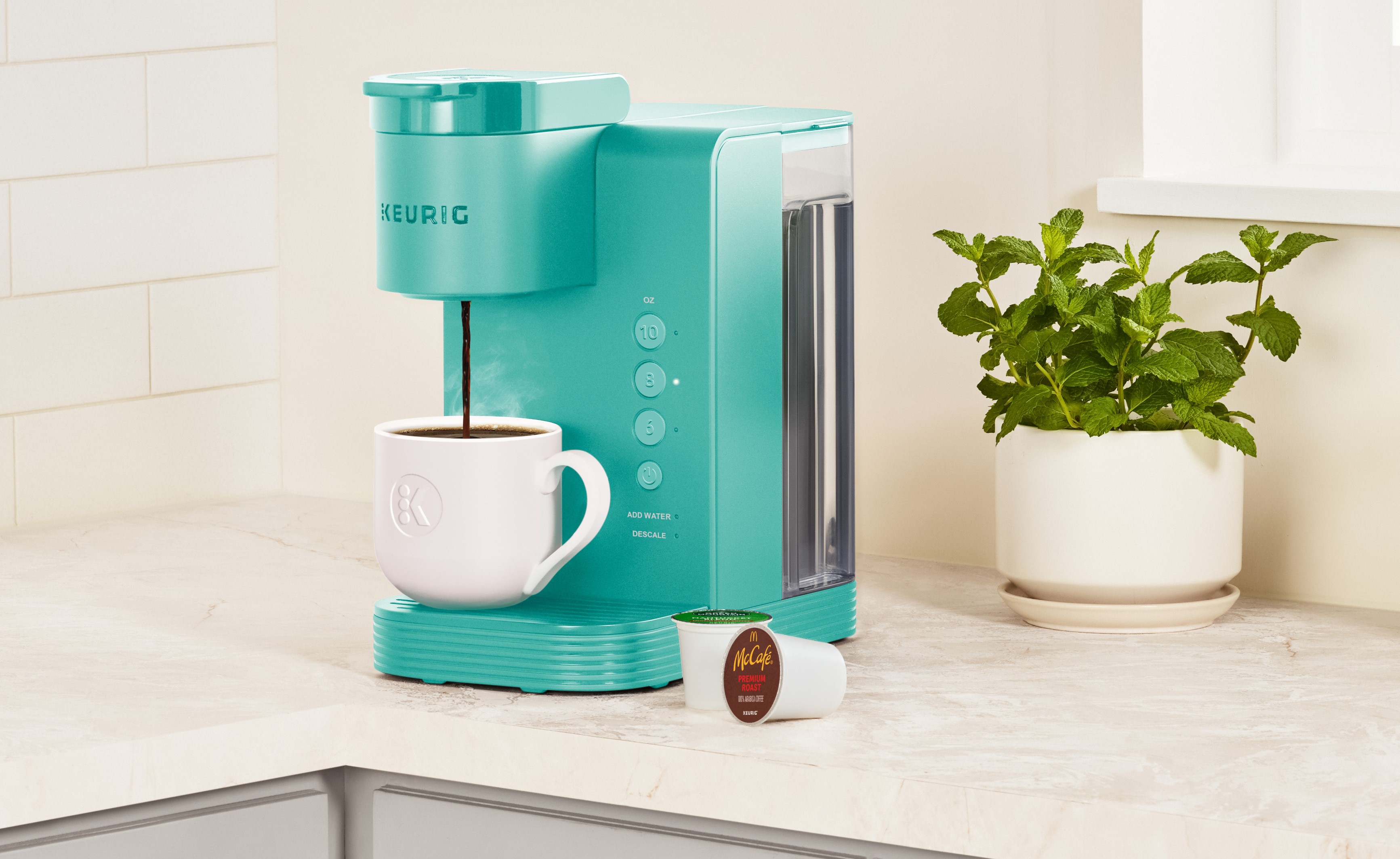How to descale a Keurig to keep your coffee maker brewing beautifully
Need to know how to descale a Keurig? Use our guide to keep your brewer free of mineral deposits


It’s important to know how to descale a Keurig if you want your coffee maker to produce consistently delicious drinks. Limescale builds up inside the brewer and, over time, can result in coffee that isn’t as warm as it should be, affect the flavor of the brew, make the machine noisy, and reduce its lifespan.
Descaling even the best coffee maker regularly will stop limescale from becoming a problem and keep every cup tasting as good as it should, though, so it’s well worth sticking to the recommended schedule – or responding to the descale light if your model has one.
We’ve got the lowdown on how to clean a Keurig right here, along with the experts’ top tips on the task.
How to descale a Keurig according to experts
Limescale is a chalky-looking deposit consisting mainly of calcium carbonate, and is left by hard water – that is water with high mineral content. Many of us live in hard water areas, and the results are there to see in our kettles as well as our coffee makers, and it affects large appliances such as washing machines and pipework, too.
Limescale isn’t bad for you, but it isn’t kind on your Keurig coffee maker, so to keep your coffee maker in perfect working order, here’s how to clean your coffee maker the right way.
1. Add descaling solution
The answer to the question of how to descale a Keurig is to begin with an empty water reservoir. The pod holder should also be empty.
You can use either Keurig’s Descaling Solution from Amazon in a bottle or its Descale Solution pouch. Distilled white vinegar is a descaling option that you’ll find widely recommended. However, you should be aware that this could invalidate the coffee maker’s warranty if your machine is still within that period. Other descaling products are available as further alternatives.
Get small space home decor ideas, celeb inspiration, DIY tips and more, straight to your inbox!
If you’re using Keurig descaler, follow the instructions and add either the solution or the contents of the pouch to the water reservoir plus water. If you’ve decided to go with vinegar or another descaler, these will also need to be diluted with water.
‘Usually, the pre-made descaling agent needs to be mixed with one part descaling agent to 1 part water (1:1),’ says Wynand Barnard of Total Coffee Base. ‘Vinegar will require the same ratio.’
Place a large mug onto the coffee maker’s drip tray.
2. Begin the descaling process
The details of how to descale a Keurig vary by model. ‘The newest K-Supreme and K-Supreme Plus models, as well as the K-Slim, have an actual descale mode,’ explains Michael Conti. ‘Once you’ve added your cleaning solution to the water tank, just press and hold the 8 and 12 oz button for 3 seconds to enter descale mode. The brew button will start flashing. Press it to start descaling.’
Repeat the latter step until add water is illuminated, then rinse the reservoir, fill with fresh water and press the brew button to rinse. Repeat the rinsing process until descale is no longer illuminated or until add water is illuminated in the case of the K-Slim.
Other models don’t have this feature. ‘You just fill the tank with your solution, make sure there is no pod in the holder, and then press the largest brew size button your model has,’ explains Michael. ‘Repeat until the add water light comes on. You’ll then need to repeat the process with only fresh water in the tank to rinse the machine.’ Note that for the K-Classic, K-Café, K-Latte, K-Elite, K-Compact, and K-Select, the brewer should rest for 30 minutes after add water comes on.
The K-Duo and K-Mini series models follow a different process, so check their instructions for descaling.
How often does a Keurig need descaling?
It’s important to know how to descale a Keurig as the interval recommended by the company for doing so is every three to six months. ‘Some machines have a descale indicator,’ says Chris Clark, founder of Brew Coffee At Home. ‘When the light is on, you should descale the machine.’
However, if your machine doesn’t have a light or you encounter issues before a coffee maker with a descale light indicates you should perform the process, you should descale it.
Michael Conti lists the telltale signs. ‘The Keurig is not pumping water; the volume of coffee brewed is less than expected; water is leaking from the machine; your coffee starts to taste bad; it takes longer to brew a K-cup.’
How do I put my Keurig in descale mode?
Always check the manual to find out how to put your Keurig into descale mode, as it varies between models.
‘For example, if you are descaling a Keurig K-Slim or K-Supreme, you’ll need to press 8oz and 12 oz buttons simultaneously for 3 seconds when the machine is powered off,’ explains Chris Clark. ‘Then start the descaling process when the light is flashing.
‘For K-Elite or K-Classic, you need to turn the machine off, add descaling solution and water with a 1:1 ratio. Then turn the machine on again, run a few brewing cycles with maximum brew size and hot water until the add water line is on. Then let the machine sit for 30 minutes. And finally, run at least 12 rinsing cycles with fresh water.
‘Overall, not all the Keurigs use the same way to enter the descale mode.’
Can I use vinegar to descale a Keurig?
Just as if you were learning how to descale a kettle, you can use vinegar to descale a Keurig, although you should always bear in mind that while your machine is in the warranty period this could invalidate it.
Many people like the idea because of the cost-saving, but it’s not universally favored by coffee aficionados. ‘I always recommend using a commercial descaling solution vs a homemade solution with ingredients like vinegar,’ says Michael Conti.
‘These commercial solutions are made with safe cleaning agents like citric acid that are more effective in removing coffee residue and oils. Plus, they are odorless so there won’t be any negative impact on the taste or aroma of your coffee. If you use vinegar, for example, you'll need to rinse the Keurig several times to get rid of that odor.’
How do I descale my Keurig without solution?
To descale a Keurig without solution, you could look to your own kitchen. ‘You can easily just use what you already have in your pantry: white distilled vinegar,’ says Ali Redmond, founder of Coffee Belly. ‘When you descale your machine fill up the water reservoir with half white distilled vinegar and half water.’
Always keep in mind the caution regarding the Keurig warranty which specifies use of the brand’s accessories if your machine is still within that period.

Sarah is a freelance journalist and editor writing for websites, national newspapers, and magazines. She’s spent most of her journalistic career specialising in homes – long enough to see fridges become smart, decorating fashions embrace both minimalism and maximalism, and interiors that blur the indoor/outdoor link become a must-have. She loves testing the latest home appliances, revealing the trends in furnishings and fittings for every room, and investigating the benefits, costs and practicalities of home improvement. It's no big surprise that she likes to put what she writes about into practice, and is a serial house revamper. For Realhomes.com, Sarah reviews coffee machines and vacuum cleaners, taking them through their paces at home to give us an honest, real life review and comparison of every model.